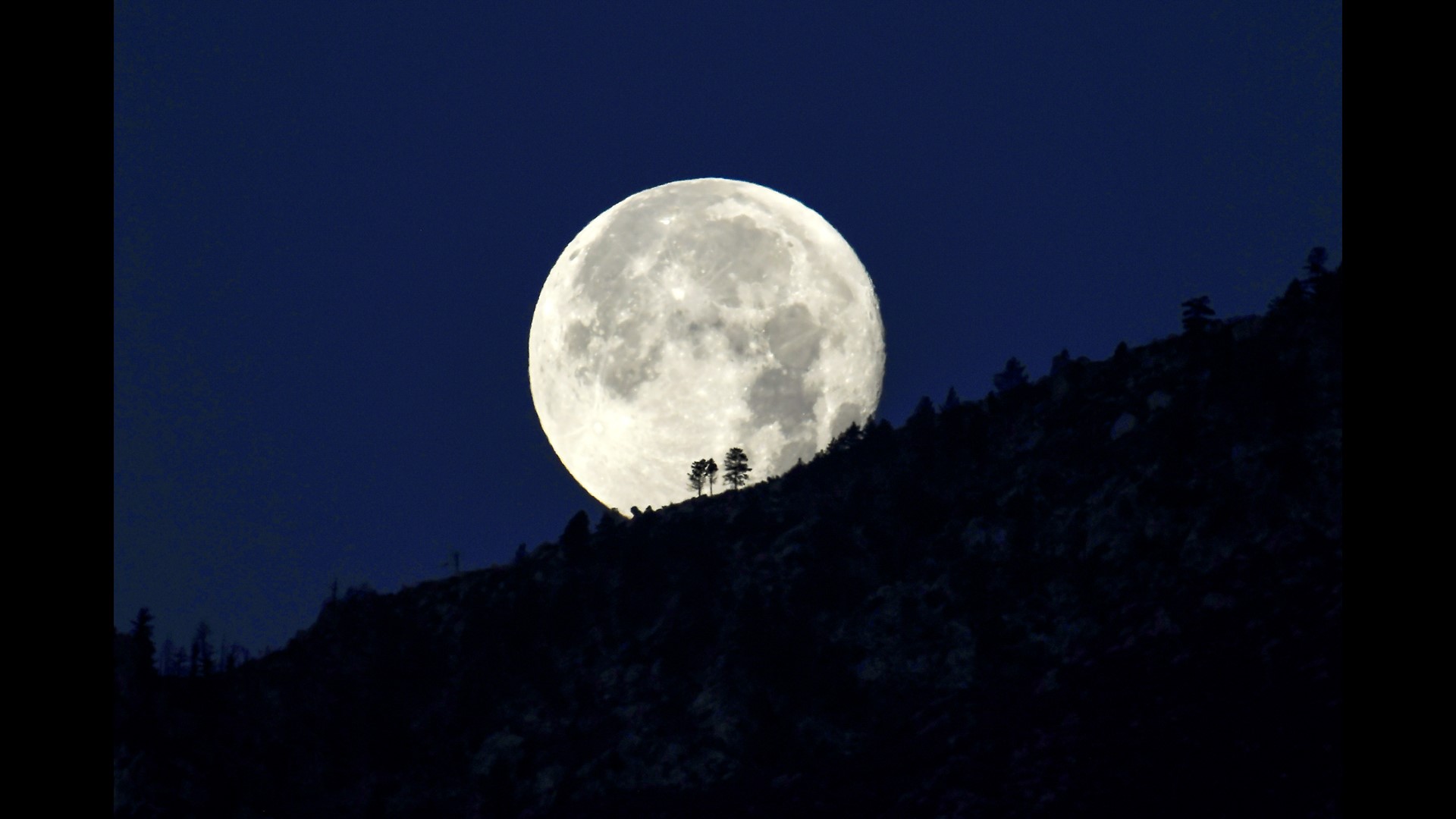CHARLOTTE, N.C. — For those who may have received new planners or calendars for the holidays, it's time to get out the pen and note these upcoming astronomical events in 2022.
From full moons and supermoons, meteor showers and eclipses, be prepared to go on a journey as the night's sky dazzles.
January
On the night of Jan. 5, look to the southwest after sunset for a close pairing of the crescent moon and Jupiter. NASA describes how the two will only be about four degrees apart, yet they will appear together through most binoculars.
Look out for the planet Mercury on Jan. 7. It will be at its highest point above the horizon in the western sky just after sunset.
The first full moon of the year falls on Jan. 17 at 6:48 p.m. ET. However, the moon will appear full the night before and to the average stargazer, it will look full for about three nights. January’s full moon is also known as the wolf moon.
Spot the station
Start watching the International Space Station fly overhead. According to NASA, sightings of the ISS will be visible for several minutes at a time on countless nights and mornings during January in the Charlotte area.
The ISS is the third brightest object in the sky, and it can be easy to spot if you know when to look up. There will be many opportunities to spot the station this year. Here are some best practices to spot it.
Full moons
Twelve full moons are on the calendar for 2022, one full moon for each month this year and three of them will appear as supermoons.
A supermoon occurs when the moon’s orbit is closest to Earth at the same time the moon is full. The close approach to Earth is known as perigee, which makes the moon appear brighter and larger than the typical full moon.
The full moons for June, July and August will be considered supermoons. Here’s a list of the full moons, according to the Farmers’ Almanac:
- Jan. 17: Wolf moon
- Feb. 16: Snow moon
- March 18: Worm moon
- April 16: Pink moon
- May 16: Flower moon
- June 14: Strawberry moon
- July 13: Buck moon
- August 11: Sturgeon moon
- Sept. 10: Harvest moon
- Oct. 9: Hunter's moon
- Nov. 8: Beaver moon
- Dec. 7: Cold moon
Total lunar eclipses
Mark your calendar for two lunar eclipses this year. The first lunar eclipse is set for May 16, and the second one later in the fall on Nov. 8. A total lunar eclipse occurs when the Earth comes between the sun and the moon, and its shadow covers the moon.
You would be able to see the moon turn red when the eclipse reaches totality. This is not an event that would require special eyewear. Special eyewear is reserved for a solar eclipse, and those will not be visible in North America in 2022.
Total lunar eclipses happen at full moon when the sun, moon and Earth are aligned, and the moon is impacted by the Earth’s shadow. Earth’s three types of shadows are umbra, penumbra and antumbra.
Meteor showers
Meteor showers are ongoing now are the Quadrantid meteor shower, but they’ve already peaked on Jan. 2 and 3. The list below highlights the dates to view upcoming meteor showers. The next meteor shower, Lyrids, will peak on April 21 and 22.
Keep an eye out for some of the most popular and strongest meteor showers of the year. Perseids and Geminids are typical fan favorites.
Circle your calendar for a warm August night away from the city lights, rural locations may see 50 to 75 meteor showers per hour when they peak on Aug. 11 and 12.
And if you just missed the Geminids meteor shower last month, it’s known as one of the strongest meteor showers of the year. Geminids will peak next on Dec. 13 and 14.
- Lyrids: April 21 and 22
- Eta Aquarids: May 4 and 5
- Perseids: Aug. 11 and 12
- Orionids: Oct. 20 and 21
- Leonids: Nov. 17 and 18
- Geminids: Dec. 13 and 14
- Ursids: Dec. 21 and 22
Viewing celestial events will always be contingent upon the weather. And on those clear nights, a good rule of thumb is to travel away from city lights and reduce light pollution to a wide-open space for the best view.
Contact KJ Jacobs at kjacobs3@wcnc.com and follow him on Facebook, Twitter and Instagram.

